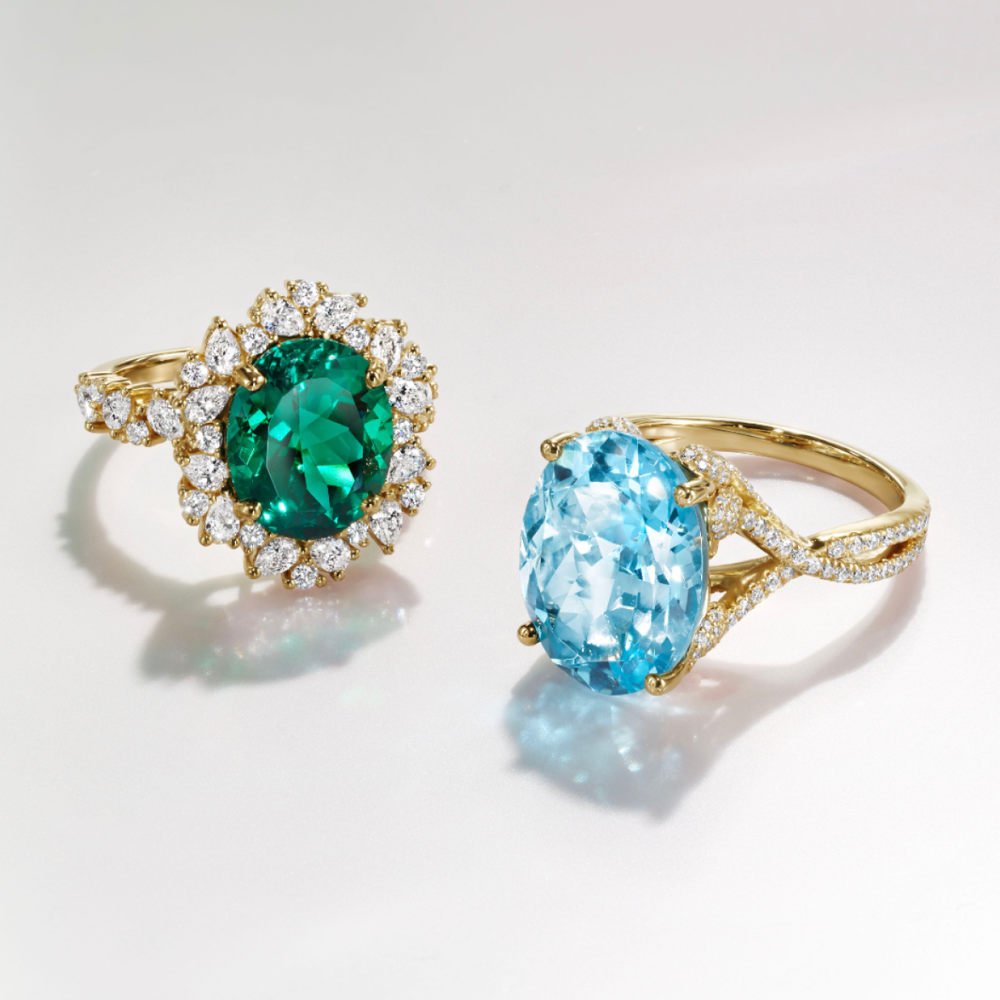
When pondering the enchanting world of birthstones, one may whimsically ask: “Which birthstone reigns supreme in terms of value?” This inquiry is particularly intriguing given the myriad factors that influence gemstone worth. From cultural significance to rarity and market demand, several elements intertwine to delineate the most expensive birthstone. This article endeavors to elucidate the complexities inherent in gem valuation, ultimately revealing which birthstone holds the crown for being the most prized.
Before we embark on this gemstone journey, let’s set the stage. Birthstones are not merely decorative ornaments; they are imbued with historical, spiritual, and emotional significance. Traditionally, each gemstone corresponds to a specific month, representing not just a birth period but also traits associated with it. As one delves deeper into this philosophical tapestry, reevaluating the prismatic beauties of each gem becomes essential—not only through aesthetic appeal but also through their economic valuations.
Gemological evaluation predominantly hinges on the four cardinal criteria known as the 4Cs: Cut, Color, Clarity, and Carat weight. Each of these tenets plays a crucial role in determining a gemstone’s overall appeal and, consequently, its market price. Delving into this concept, one might question, how do the 4Cs apply to the birthstones we cherish? To uncover this, it is vital to analyze each month’s designated gemstone in light of its intrinsic properties and market dynamics.
Starting with January, the garnet captivates with its deep crimson hues. While historically revered, garnets are relatively abundant, which results in modest pricing. As we progress to February’s amethyst, the royal purple gem, its rich color and historical significance elevate its value beyond that of the garnet. However, this pricing still does not rival the upper echelons of more coveted stones.
March introduces aquamarine, a tranquil blue gemstone revered for its clarity and tranquility. Aquamarines fetch a higher price point than garnets and amethysts, especially when pristine specimens are sourced from locations like Brazil. Its seductive marine tones have established it firmly in the luxury market, but it does not yet grasp the title of the most expensive birthstone.
As we advance into April, diamond dazzles—the pinnacle of luxury and desirability. The unparalleled allure of diamonds, complemented by their rarity in larger sizes, clearly sets them apart from other birthstones. Often seen as the epitome of status, they command high prices, particularly those graded for exceptional cut and clarity. Diamonds are not merely a birthstone; they symbolize commitment and wealth, thus solidifying their status in the high-value gemstone hierarchy.
The month of May brings forth emeralds, renowned for their lush green color and historical significance. The scarcity of fine-quality emeralds, particularly those devoid of heavy inclusions, can lead to staggering prices. This gemstone’s allure is amplified by its associations with vitality and renewal, aspects often desired in jewelry offerings. Therefore, emeralds can be contenders for the highest market value, especially when sourced from premium locations.
As June’s pearl makes an entrance, one must contemplate its unique position in the gemstone pantheon. While aesthetically pleasing, pearls are organic gems and their valuation can fluctuate based on factors like luster, shape, and size. Unlike their crystalline counterparts, they may not reach astronomical market metrics, yet they retain significant sentimental value, particularly in bridal contexts.
July introduces the ruby, a fiery red gemstone revered across cultures. Rubies made from exceptional quality can command prices that sometimes rival or even surpass diamonds. Their royal lineage and unparalleled color intensity establish them firmly in the luxury bracket, often surpassing the cost of emeralds when factors like provenance and size are taken into account.
August’s peridot, though charming, often falls to a lower price tier, largely due to its relative abundance. However, it introduces a unique vibrancy with its verdant shades, appealing to niche markets. September’s sapphire captivates with a broad range of hues, predominantly blue, and quality specimens can fetch prices that rival those of rubies and diamonds.
October brings opal to the forefront, a gemstone renowned for its kaleidoscopic display of colors. The value of opals can fluctuate significantly depending on the type and quality of the stone. However, high-quality black opals are amongst the more valuable on the market, showcasing the depth and intricacy of this captivating stone.
November’s topaz offers an amalgam of colors, with imperial topaz obtaining considerable attention and commanding prices that rival those of lesser sapphires. December’s turquoise, while storied in tradition, remains comparatively affordable compared to its counterparts as its availability in the market is quite high.
Upon synthesizing these insights, it emerges that diamonds unequivocally hold the position of the most expensive birthstone, largely due to their enduring popularity and the multifaceted parameters of supply and demand. However, subjectivity plays a pivotal role; for an aficionado, a mesmerizing ruby or emerald may invoke a personal valuation that surpasses the allure of diamonds.
Consequently, while diamonds may be categorized as the most valuable birthstone on a market level, the true essence of ‘value’ transcends monetary metrics. Emotional connections, aesthetic preferences, and personal significance intertwine to create a rich tapestry of worth that is invaluable and multi-dimensional.
Ultimately, the query “Which birthstone is the most expensive?” opens a fascinating avenue for exploration into the realm of gemology and personal values. The interplay of market dynamics, personal sentiment, and historical significance reveals that the world of gemstones is as multifaceted as the stones themselves. The challenge remains: how do you define value in the gems that adorn your life?
